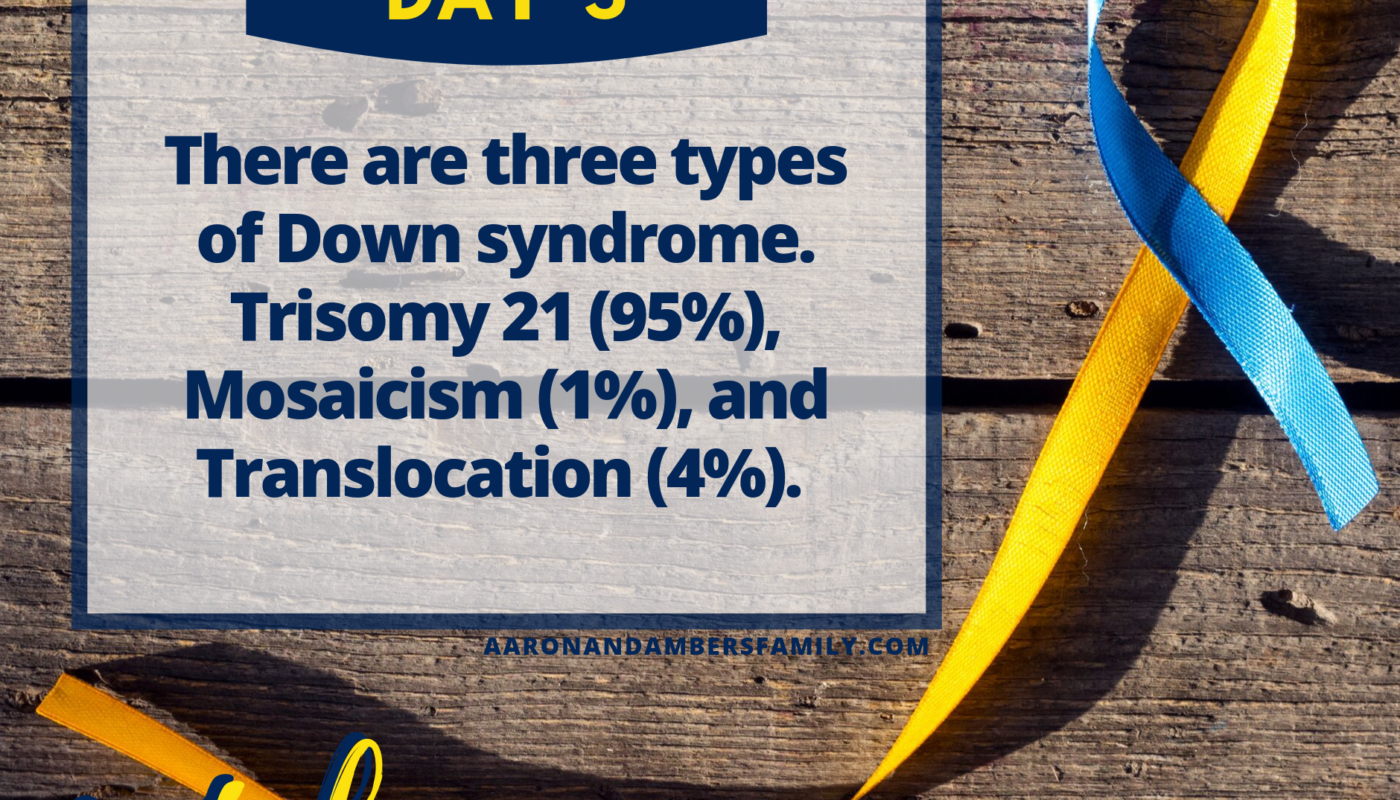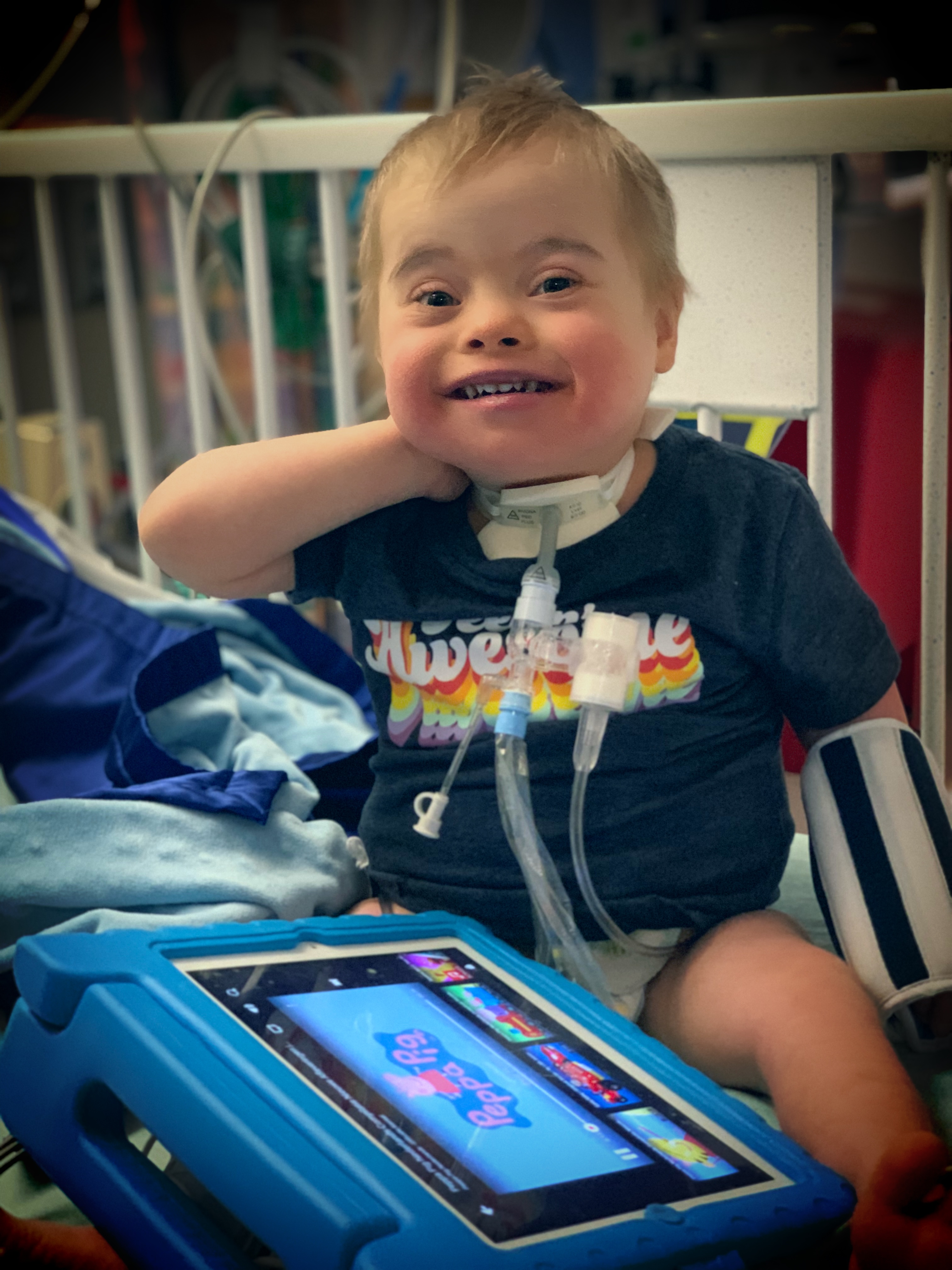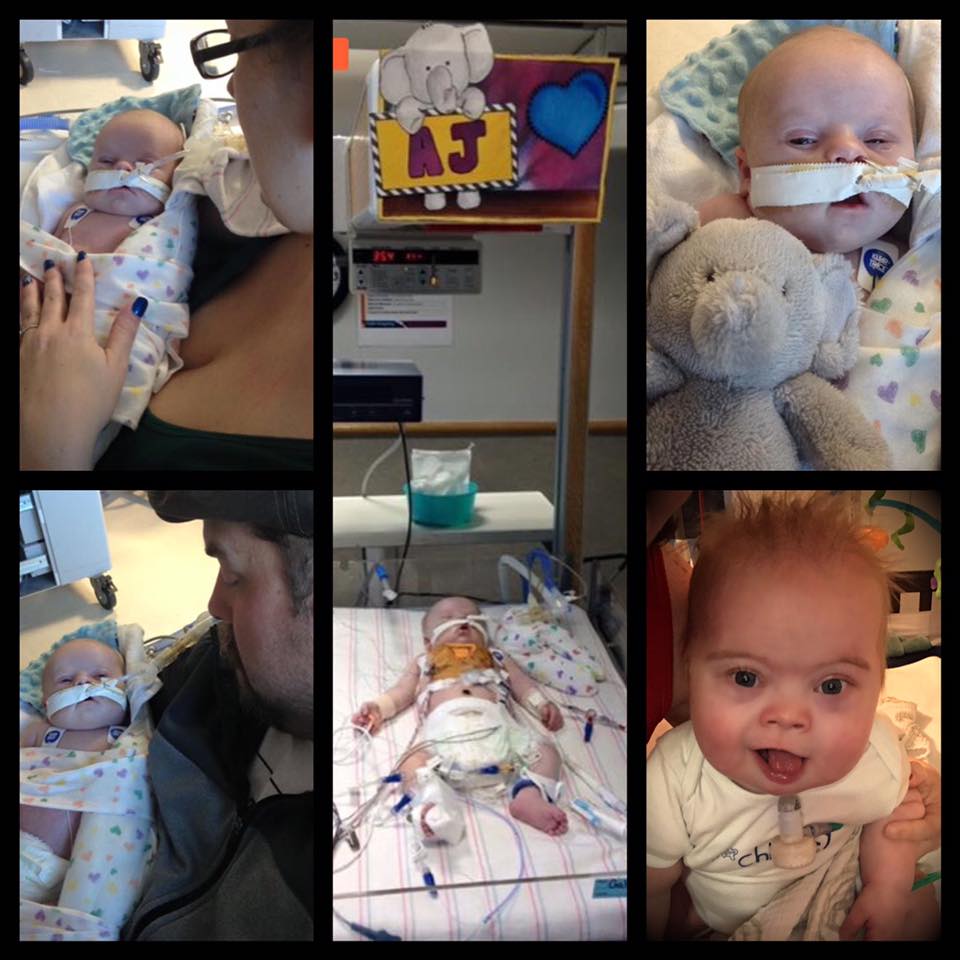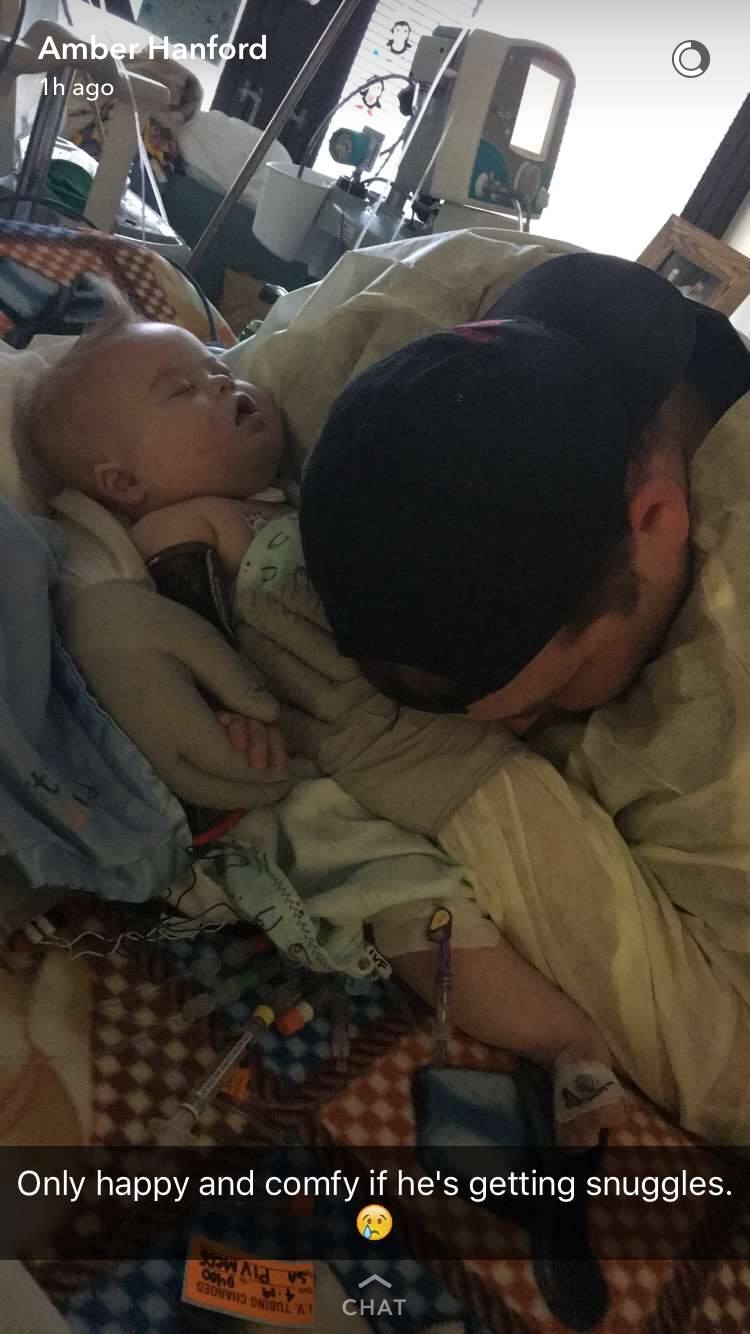Until AJ was diagnosed and we met with a geneticist, I really had no idea that there was more than one type of Down syndrome.
It is typically difficult to tell what type of Down syndrome a person has by simply looking at them. When genetic testing is done, typically 20 cells are analyzed to look at the structure of the chromosomes and determine which of the three types a person has.
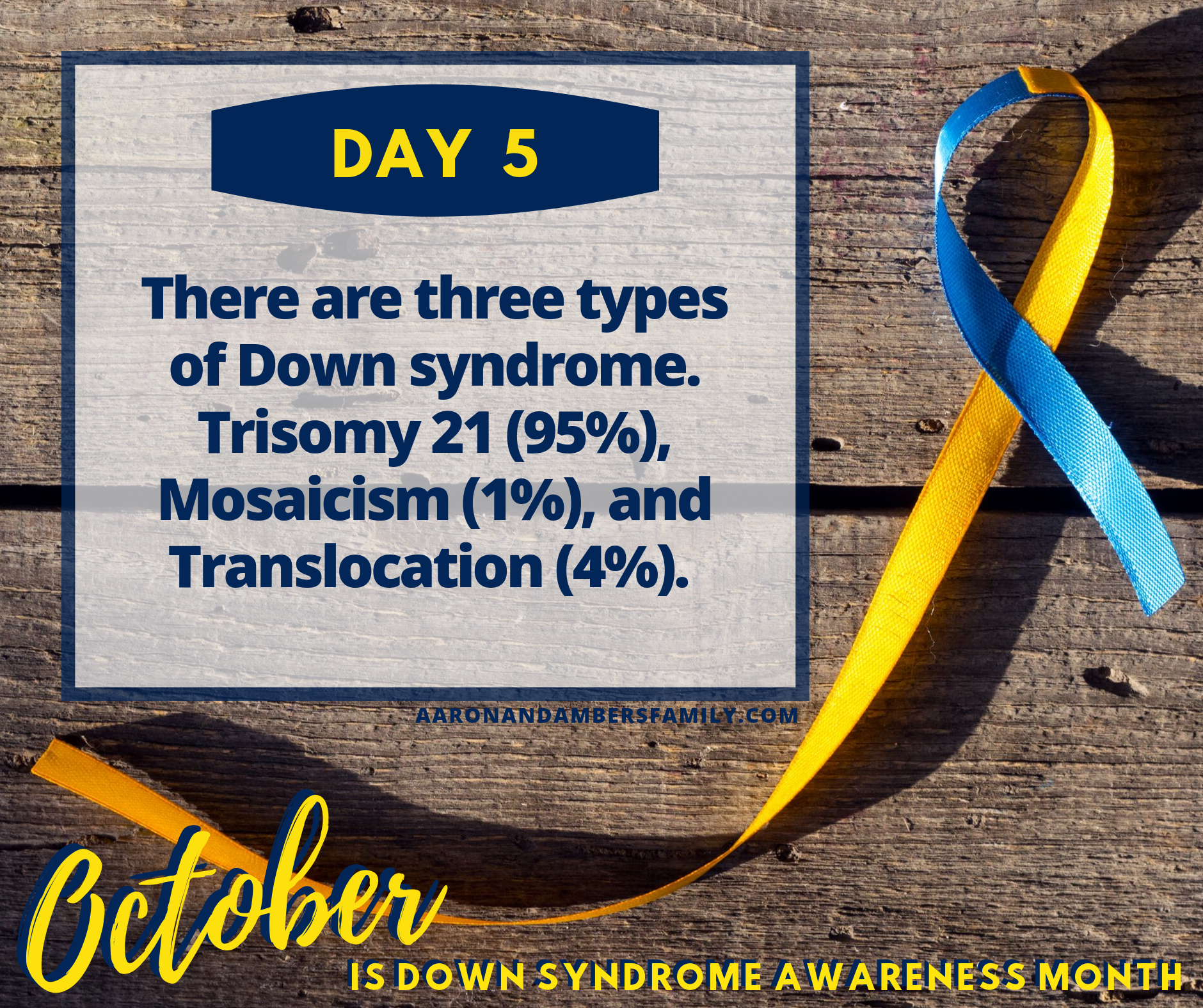
AJ has Trisomy 21, which means during his genetic testing, there were three copies of the 21st chromosome in all of the cells that were tested. Trisomy 21 is the most common type of Down syndrome (and the most well known by the average person).
In mosaicism (or mosaic Down syndrome), only some cells have the third copy of the 21st chromosome, while the others have two. People who have mosaic Down syndrome may or may not have the same features as people with full trisomy 21. Also, the percentage of cells with the third chromosome may be different in various types of cells in the body (ex: brain, muscle, skin, etc). Mosaicism is the most rare type of Down syndrome.
Translocation Down syndrome occurs when there are three of the 21st chromosome, but one has broken off and attached to another chromosome. It could break off and attach to the 14th or 15th chromosome, or two 21st chromosomes could attach together.
Translocation Down syndrome is the only form of Down syndrome that can be hereditary. In some cases adults who have no signs or symptoms may have two chromosomes attached together. This is called a balanced translocation because they don’t have an extra copy of any of their chromosomes. Having a balanced translocation does increase the odds of having a child with an unbalanced translocation, like trisomy 21, but does not guarantee it

